- Growing Fennel in the Vegetable Garden
- Introduction
- Types of Fennel
- Properties of Fennel
- Cultivation Techniques
- Harvesting and Storage
- Final Thoughts
- Fennel Types for Your Vegetable Garden
- Properties of Fennel
- 1. Aromatic Flavor:
- 2. Nutritional Value:
- 3. Antioxidant Properties:
- 4. Digestive Aid:
- 5. Anti-inflammatory Effects:
- 6. Weight Loss Aid:
- 7. Potential Cancer-fighting Properties:
- 8. Respiratory Health:
- 9. Skin Health:
- 10. Herb for Breastfeeding:
- Tips for Growing Fennel Successfully
- Harvesting Fennel from Your Garden
- When to Harvest Fennel
- How to Harvest Fennel Bulbs
- Harvesting Fennel Seeds
- Harvesting Fennel Leaves
- Storing Harvested Fennel
- Conclusion
- Managing Pests and Diseases in Fennel Plants
- Pests
- Diseases
- Conclusion
- Using Fennel in your Kitchen
- 1. Fresh fennel
- 2. Fennel seeds
- 3. Fennel bulb
- 4. Fennel fronds
- 5. Fennel tea
- Delicious Recipes with Fennel as a Key Ingredient
- Shop Fennel Seeds and Plants at YourSite.com
- Why Choose YourSite.com?
- How to Purchase
- Start Growing Fennel Today!
- “Question-Answer”
- What is fennel?
- How do I grow fennel in my vegetable garden?
- What are the different types of fennel?
- Can fennel be used for medicinal purposes?
- What are the nutritional benefits of fennel?
- Can fennel be grown in containers?
- “Video” Easily grow SPROUTS at home for pennies on the dollar!
Fennel is a versatile and flavorful vegetable that is gaining popularity in home gardens. With its distinctive anise-like flavor, fennel can be used in a variety of dishes, from salads to soups to stews. Not only is fennel delicious, but it also offers a range of health benefits, making it a great addition to any garden.
There are several types of fennel that can be grown in the vegetable garden. The most common type is the bulb fennel, which has a large, bulbous base that can be eaten raw or cooked. This type of fennel is typically grown for its edible bulb, but the fronds and seeds can also be used in cooking. Another type of fennel is the leaf fennel, which has feathery leaves that can be used as an herb or garnish.
In addition to its culinary uses, fennel also offers a range of medicinal properties. It is rich in vitamins and minerals, including vitamins C and K, potassium, and fiber. Fennel has been used for centuries in traditional medicine to help soothe digestive issues and reduce inflammation. It is also believed to have diuretic properties, which can help with detoxification and weight loss.
Growing fennel in the vegetable garden is relatively easy. It can be planted from seed or transplants and requires full sun and well-drained soil. Fennel is a perennial plant that can be grown in most climates, although it prefers mild winters and cool summers. It is important to keep fennel well-watered, especially during hot weather, to prevent the bulbs from becoming tough and woody.
In conclusion, fennel is a versatile and flavorful vegetable that can be easily grown in the vegetable garden. Whether you are a seasoned gardener or a beginner, fennel is a great addition to any garden. With its distinct flavor and range of health benefits, fennel is sure to be a hit in your kitchen.
Growing Fennel in the Vegetable Garden
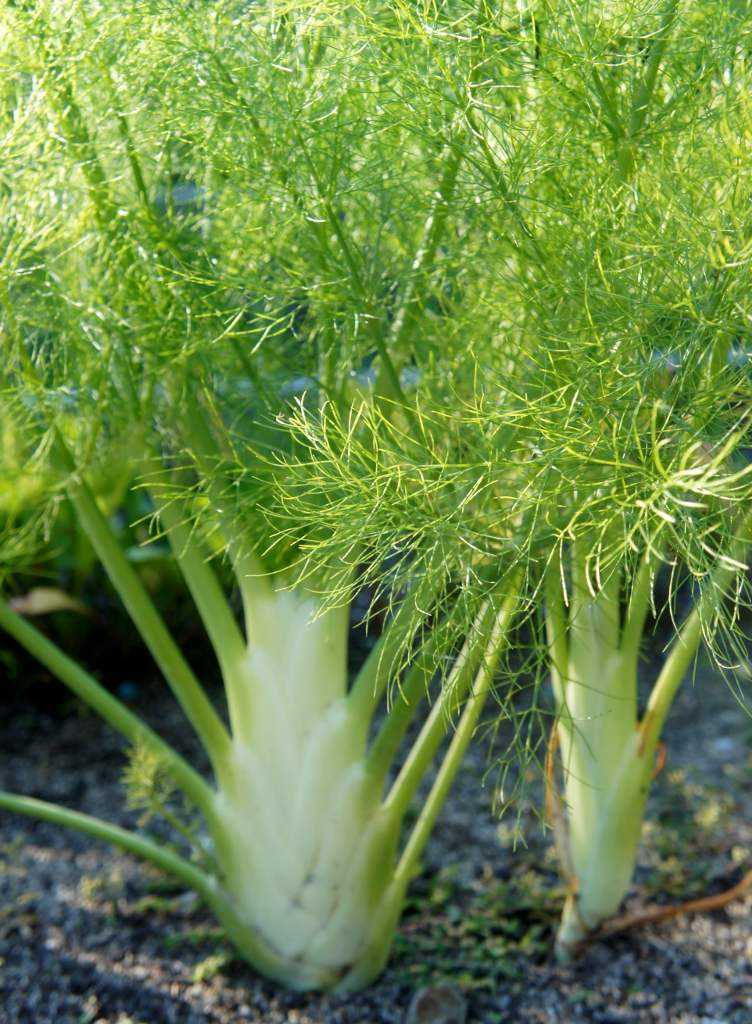
Introduction
Fennel is a popular herb that is commonly used in cooking for its aromatic and licorice-like flavor. It is also a versatile plant that can be grown in the vegetable garden, providing both culinary and medicinal benefits. This article will provide an overview of how to grow fennel, including information on types, properties, and cultivation techniques.
Types of Fennel
There are two main types of fennel that are commonly grown: Florence fennel (Foeniculum vulgare var. dulce) and common fennel (Foeniculum vulgare). Florence fennel is a variety that is cultivated specifically for its bulb-like stem, which is used as a vegetable. Common fennel, on the other hand, is grown for its seeds and leaves, which are used as herbs.
Properties of Fennel
Fennel has a number of properties that make it a desirable addition to the vegetable garden. It is an excellent source of vitamin C, fiber, and potassium, and is also rich in antioxidants. The essential oils found in fennel have been shown to have anti-inflammatory and antimicrobial properties, making it beneficial for health and wellness.
Cultivation Techniques
Fennel can be grown from both seeds and transplants. If starting from seeds, they should be sown directly in the garden in early spring, after the danger of frost has passed. The seeds should be planted about ¼ inch deep and spaced 12-18 inches apart. Fennel prefers full sun and well-drained soil, so make sure to choose a sunny location in the garden.
When growing Florence fennel, it is important to provide the plants with plenty of water and adequate spacing to allow the bulbs to develop properly. The soil should be kept consistently moist, but not overly saturated, to prevent rotting. Common fennel, on the other hand, is more tolerant of dry conditions and can be grown with less water.
Harvesting and Storage
Florence fennel bulbs can be harvested when they reach a diameter of 2-3 inches. They should be cut from the plant, leaving about an inch of stem attached. The bulbs can be stored in the refrigerator for up to a week.
Common fennel can be harvested throughout the growing season, with the leaves being picked as needed. The seeds can be collected once they have turned brown and fully dried. They should be stored in an airtight container in a cool, dark place.
Final Thoughts
Growing fennel in the vegetable garden can provide you with an abundant supply of this versatile herb. Whether you choose to cultivate Florence fennel for its flavorful bulbs or common fennel for its aromatic leaves and seeds, you can enjoy the culinary and medicinal benefits of this wonderful plant.
Fennel Types for Your Vegetable Garden
There are several different types of fennel that you can consider growing in your vegetable garden. Each type has its own unique characteristics and uses. Here are some popular fennel varieties:
Florence Fennel: Also known as finocchio, this type of fennel is grown for its bulbous base, which has a sweet, anise-like flavor. Florence fennel is often used in salads, soups, and roasted vegetable dishes. It has a slightly crunchy texture and can be eaten raw or cooked.
Common Fennel: This type of fennel is grown for its aromatic leaves and seeds, which are used as a culinary herb and spice. Common fennel has feathery, dill-like foliage and produces small yellow flowers. Its seeds can be harvested and used to flavor dishes like bread, sausages, and pickles.
Sweet Fennel: As the name suggests, sweet fennel has a milder and sweeter flavor compared to common fennel. It is often used as a tea or herbal remedy for digestive issues. Sweet fennel can also be used in cooking to add a subtle licorice-like flavor to dishes.
When choosing fennel varieties for your vegetable garden, consider your intended use and personal preferences. Florence fennel is a great option if you want to enjoy the bulbous base, while common and sweet fennel are more suitable for culinary and medicinal uses.
| Type | Flavor | Uses |
|---|---|---|
| Florence Fennel | Sweet and anise-like | Salads, soups, roasted dishes |
| Common Fennel | Aromatic and slightly bitter | Culinary herb, spice |
| Sweet Fennel | Mild and sweet | Tea, herbal remedy, cooking |
Remember to provide the right growing conditions and care for your chosen fennel variety to ensure a successful harvest. Happy gardening!
Properties of Fennel
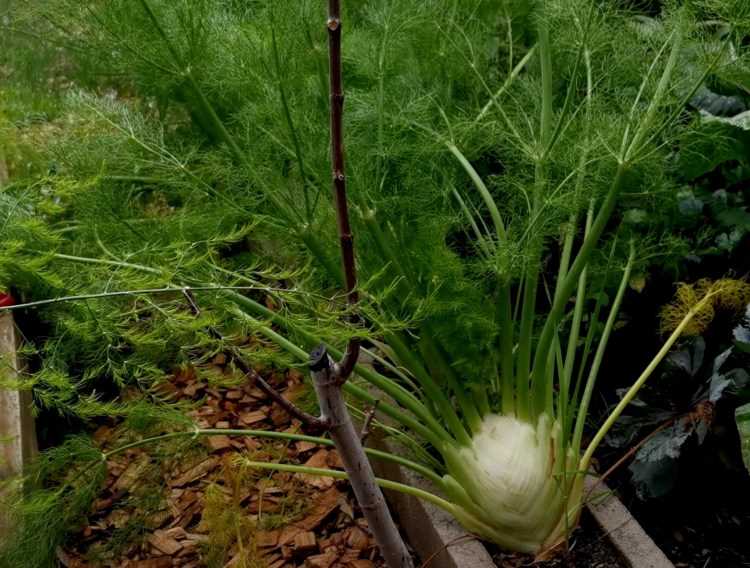
Fennel is a versatile herb that offers a range of properties and benefits. Here are some of its key properties:
1. Aromatic Flavor:
Fennel has a distinct aromatic flavor that is similar to anise or licorice. This unique flavor makes it a popular choice for culinary applications.
2. Nutritional Value:
Fennel is rich in vitamins and minerals, making it a healthy addition to your diet. It is a good source of vitamin C, fiber, potassium, and manganese.
3. Antioxidant Properties:
Fennel contains various antioxidants, such as flavonoids and phenolic compounds, which help neutralize free radicals and protect the body against oxidative stress.
4. Digestive Aid:
Fennel has been traditionally used as a digestive aid. It can help relieve bloating, indigestion, and gas. Fennel seeds are often chewed after a meal to promote digestion.
5. Anti-inflammatory Effects:
The compounds found in fennel have anti-inflammatory properties that can help reduce inflammation in the body. This can be beneficial for conditions such as arthritis and asthma.
6. Weight Loss Aid:
Fennel is low in calories and high in fiber, making it a great addition to a weight loss diet. It can help promote feelings of fullness and reduce cravings.
7. Potential Cancer-fighting Properties:
Fennel contains certain compounds, such as anethole, that have been shown to have anti-cancer properties. Research suggests that fennel may help inhibit the growth of cancer cells.
8. Respiratory Health:
Fennel is known for its expectorant properties, which can help loosen phlegm and mucus in the respiratory tract. It may also help relieve coughs and symptoms of bronchitis.
9. Skin Health:
Fennel extract has been used in skincare products for its antibacterial and antioxidant properties. It may help improve the overall health and appearance of the skin.
10. Herb for Breastfeeding:
Fennel is believed to have galactagogue properties, which means it may help stimulate milk production in breastfeeding mothers.
Due to its numerous properties and potential benefits, fennel is a valuable herb to incorporate into your diet and skincare routine.
Tips for Growing Fennel Successfully
- Choose the right location: Fennel requires a sunny spot in the garden with well-draining soil. Make sure to choose a location where it will receive at least 6-8 hours of direct sunlight each day.
- Prepare the soil: Before planting fennel, it’s important to prepare the soil properly. Fennel prefers a slightly alkaline soil with a pH level of 6.0-7.0. Amend the soil with organic matter, such as compost, to improve its fertility and drainage.
- Planting: Sow fennel seeds directly in the garden in the early spring, after the last frost date. Space the seeds 6-12 inches apart and cover them with a thin layer of soil. Keep the soil moist but not waterlogged until the seeds germinate.
- Watering: Fennel plants require regular watering to keep the soil evenly moist. Water deeply once or twice a week, depending on the weather. Avoid overwatering, as it can lead to root rot.
- Feeding: Fennel is a heavy feeder and benefits from regular fertilization. Apply a balanced fertilizer, such as a 10-10-10 formula, every 4-6 weeks during the growing season to promote healthy growth.
- Thinning and pruning: When the fennel seedlings are a few inches tall, thin them out to ensure proper spacing. Leave only the strongest plants, spacing them 12-18 inches apart. Additionally, remove any yellow or damaged leaves and trim the fennel fronds as needed.
- Pest and disease control: Fennel is relatively pest and disease resistant. However, keep an eye out for aphids, slugs, and snails, and take appropriate measures to control them if necessary.
- Harvesting: Fennel bulbs are ready for harvest when they reach a diameter of 3-4 inches and feel firm to the touch. Cut the bulbs at the base, leaving a few inches of the stalk attached. The fronds can be harvested at any time and used as a flavorful herb.
- Storage: Fennel bulbs can be stored in the refrigerator for up to two weeks. To extend their shelf life, trim the stalks and place the bulbs in a plastic bag with holes to allow for airflow.
Harvesting Fennel from Your Garden
When to Harvest Fennel
Fennel can be harvested when it reaches maturity, which typically takes around 90 to 115 days after sowing the seeds. The plant should have a bulbous base and tall, feathery green leaves. Additionally, the bulb will become firm and swollen when mature.
How to Harvest Fennel Bulbs
To harvest the fennel bulbs, use a sharp knife or garden shears to cut them from the base of the plant, leaving about 1 inch of the stem attached to the bulb. Be careful not to cut too close to the bulb, as this may affect its shelf life.
Harvesting Fennel Seeds
If you are interested in harvesting fennel seeds, allow the plant to fully mature and the flowers to turn from yellow to brown. Cut the flower heads and place them in a paper bag. Hang the bag upside down in a cool, dry space for a few weeks to allow the seeds to fully dry. Once dried, shake the bag to release the seeds, and store them in a sealed container.
Harvesting Fennel Leaves
Fennel leaves can be harvested at any time during the growing season. The feathery green leaves are flavorful and can be used fresh or dried for later use. Simply snip off the desired amount of leaves from the outer part of the plant, leaving the inner leaves intact to allow for continued growth.
Storing Harvested Fennel
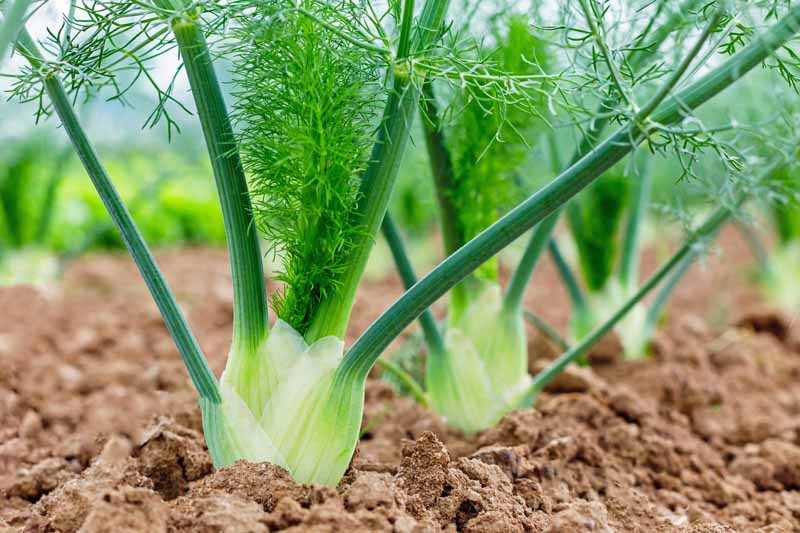
To store fennel bulbs, remove the green fronds from the bulb and store them separately. Place the bulbs in a plastic bag or airtight container and refrigerate them. Fennel bulbs can typically be stored for up to two weeks.
When storing fennel seeds, ensure they are fully dried before transferring them to a sealed container. Store the container in a cool, dark place to maintain seed viability.
Fennel leaves can be stored by drying them in a dark and well-ventilated area until they are crisp. Once dried, store the leaves in a sealed container away from moisture and sunlight.
Conclusion
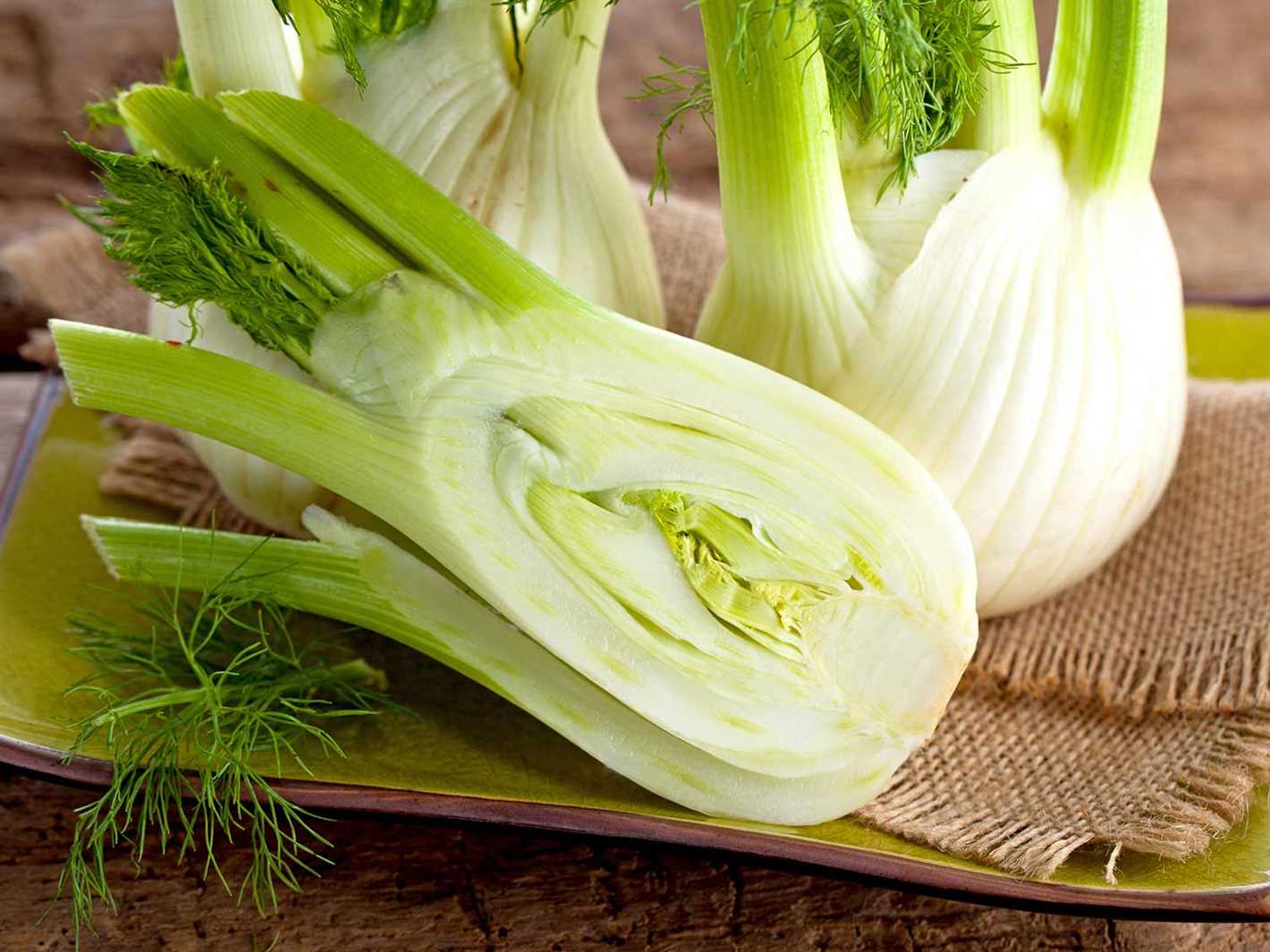
Harvesting fennel from your garden allows you to enjoy its fresh and flavorful bulbs, seeds, and leaves. Follow the proper harvesting techniques, and store your harvested fennel properly to ensure its maximum flavor and shelf life.
Managing Pests and Diseases in Fennel Plants
Fennel plants are susceptible to various pests and diseases that can affect their overall health and productivity. Taking preventive measures and implementing proper management strategies can help keep your fennel plants free from these common issues.
Pests
1. Aphids: These small, soft-bodied insects can be commonly found on the leaves and stems of fennel plants. They feed on plant sap and can cause stunted growth and distorted leaves. To control aphids, you can physically remove them by hand or use insecticidal soaps or neem oil.
2. Slugs and Snails: Slugs and snails can damage fennel plants by chewing holes in the leaves and stems. To prevent slug and snail infestations, you can create barriers around the plants using copper tape or diatomaceous earth. You can also set up traps with beer or use iron phosphate-based slug pellets.
3. Caterpillars: Certain caterpillars, such as the cabbage looper and the parsley worm, can feed on fennel leaves, causing extensive damage. Handpicking these caterpillars is an effective method of control. You can also use biological controls like Bacillus thuringiensis (Bt) to target caterpillars specifically.
Diseases
1. Fusarium Wilt: Fusarium wilt is a fungal disease that affects the root system of fennel plants. The plants may exhibit wilting, yellowing, and stunted growth. To manage fusarium wilt, practice crop rotation, ensure proper soil drainage, and avoid over-watering.
2. Downy Mildew: Downy mildew is a common foliar disease in fennel plants, characterized by grayish-white patches on the leaves. To control downy mildew, provide good air circulation around the plants, avoid overhead watering, and remove and destroy infected plant material.
3. Powdery Mildew: Powdery mildew appears as a powdery white coating on the leaves and stems of fennel plants. To manage powdery mildew, ensure good air circulation, avoid over-watering, and treat with fungicidal sprays if necessary.
Conclusion
By staying vigilant and implementing appropriate pest and disease management practices, you can keep your fennel plants healthy and thriving. Regularly inspect your plants, take prompt action when you notice any signs of pests or diseases, and consult with local gardening resources for specific recommendations for your region.
Using Fennel in your Kitchen
1. Fresh fennel
Fresh fennel is a versatile and flavorful vegetable that can be used in a variety of dishes. Here are a few ways to use fresh fennel:
- Chop it up and add it to salads for a refreshing and crunchy element.
- Use it as a garnish for fish dishes to add a hint of anise flavor.
- Roast it with olive oil, garlic, and Parmesan cheese for a delicious side dish.
2. Fennel seeds
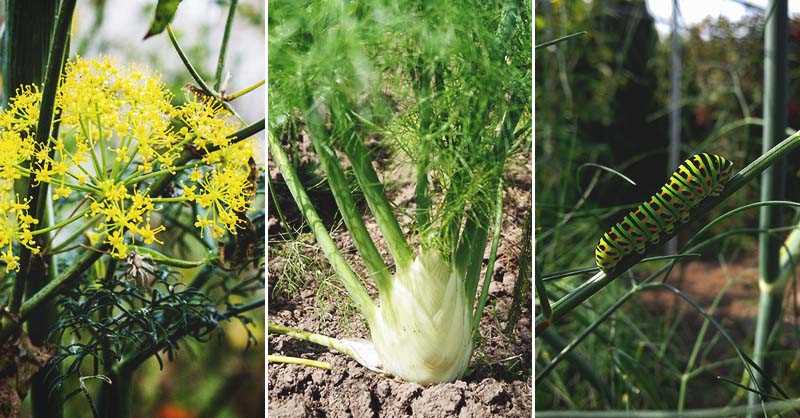
Fennel seeds are often used as a spice in cooking and have a distinct licorice flavor. Here are some ways you can use fennel seeds:
- Grind them and use them as a seasoning for roasted meats or vegetables.
- Add them to soups or stews for a depth of flavor.
- Use them in baking to add a unique touch to breads or cookies.
3. Fennel bulb
The bulb of the fennel plant can be cooked and eaten as a vegetable. Here are a few ways to use fennel bulb:
- Slice it thinly and use it in salads or slaws for a crisp, refreshing taste.
- Sauté it with onions and garlic as a base for pasta sauces or stir-fries.
- Grill or roast it and serve it as a tasty side dish.
4. Fennel fronds
The feathery fronds of the fennel plant can be used as an herb and have a similar flavor to the bulb. Here are some ways to use fennel fronds:
- Chop them up and sprinkle them over fish or seafood dishes.
- Add them to salads or pasta dishes for a pop of color and flavor.
- Use them as a garnish for soups or roasted vegetables.
5. Fennel tea
You can also use fennel to make a soothing and aromatic tea. Here’s how:
- Bring water to a boil in a pot.
- Add fennel seeds or fennel fronds to the boiling water.
- Let it steep for 5-10 minutes.
- Strain the tea and enjoy hot or cold.
Whether you’re using fresh fennel, fennel seeds, fennel bulb, fennel fronds, or making fennel tea, this versatile plant can add a unique flavor to your dishes and provide various health benefits.
Delicious Recipes with Fennel as a Key Ingredient
- Fennel and Orange Salad: A refreshing and light salad that combines thinly sliced fennel, juicy orange segments, and a tangy citrus dressing. Garnish with fresh mint leaves for added freshness.
- Fennel Roasted Chicken: This recipe features a whole chicken rubbed with a flavorful blend of herbs and spices, including fennel seeds. The chicken is then roasted to perfection, creating a juicy and aromatic main dish.
- Grilled Fennel and Halloumi Skewers: Skewers of fennel and halloumi cheese are grilled to create a delightful combination of smoky and slightly caramelized flavors. Serve with a squeeze of lemon juice for added brightness.
- Tomato Fennel Soup: A creamy and comforting soup made with fresh tomatoes and fennel bulbs. The fennel adds a subtle sweetness and depth of flavor to the soup. Serve with a crusty bread for a satisfying meal.
- Fennel and Potato Gratin: This cheesy and creamy gratin is made with layers of thinly sliced potatoes and fennel, topped with a golden crust. The fennel adds a unique twist to this classic dish.
- Pan-Seared Salmon with Fennel Slaw: Pan-seared salmon fillets are served with a crunchy slaw made with thinly sliced fennel, carrots, and cabbage. Top with a zesty dressing for a light and flavorful meal.
These recipes showcase the versatility of fennel as a key ingredient in various dishes. Whether you’re looking for a light salad, a flavorful main course, or a comforting soup, fennel can be the star of the show. Its unique flavor adds depth and complexity to any dish, making it a must-try ingredient for any food lover.
Shop Fennel Seeds and Plants at YourSite.com
If you are interested in growing fennel in your vegetable garden, YourSite.com offers a wide variety of fennel seeds and plants for purchase. With our high-quality products, you can experience the joy of growing this versatile herb right at your own home.
Why Choose YourSite.com?
At YourSite.com, we understand the importance of providing our customers with quality products and a seamless shopping experience. When you shop with us for your fennel seeds and plants, you can enjoy the following benefits:
- Wide Selection: We offer a diverse range of fennel varieties, ensuring you can find the perfect one for your garden.
- Excellent Quality: Our fennel seeds and plants are sourced from reputable suppliers, guaranteeing their freshness and viability.
- Convenient Online Shopping: Our website is user-friendly and allows you to browse and purchase fennel seeds or plants from the comfort of your own home.
- Fast and Reliable Shipping: We aim to process and ship orders as quickly as possible, so you can start growing your fennel without delay.
- Expert Advice: Our team is always available to provide guidance and answer any questions you may have about growing fennel.
How to Purchase
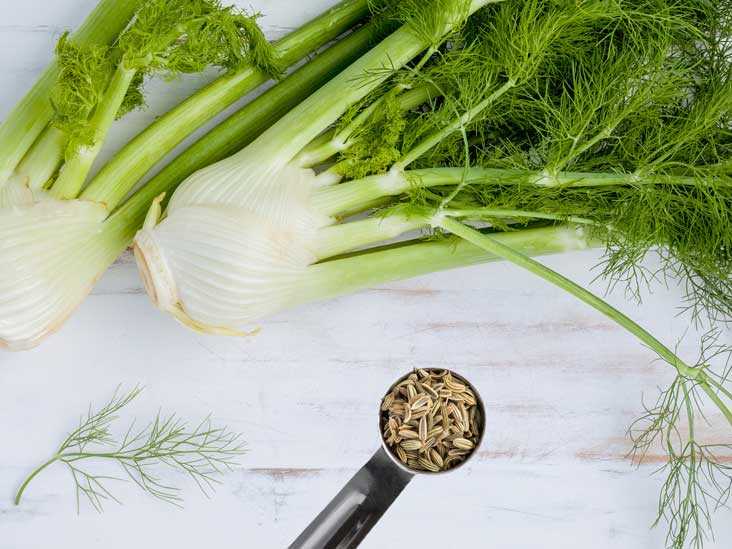
Shopping for fennel seeds and plants at YourSite.com is simple. Just follow these steps:
- Visit our website at www.yoursite.com.
- Search for “fennel seeds” or “fennel plants” using our search bar.
- Browse through the available options and select the ones that best suit your preferences and needs.
- Add the chosen items to your cart and proceed to checkout.
- Provide your shipping information and select your preferred shipping method.
- Complete the payment process.
- Once your order is confirmed, sit back and wait for your fennel seeds or plants to arrive at your doorstep.
Start Growing Fennel Today!
So why wait? Start adding fennel to your vegetable garden and take advantage of its unique flavor and health benefits. Shop for fennel seeds and plants at YourSite.com and embark on your own fennel growing adventure today!
“Question-Answer”
What is fennel?
Fennel is a vegetable plant that belongs to the carrot family. It is known for its aromatic and flavorful seeds, as well as its bulb and fronds, which are used in cooking.
How do I grow fennel in my vegetable garden?
To grow fennel in your vegetable garden, start by sowing the seeds directly into the soil, spacing them about 12 inches apart. Fennel prefers full sun and well-drained soil. Keep the soil moist but not waterlogged, and thin out the seedlings once they are a few inches tall to give them enough space to grow. Fennel can be harvested in about 90-100 days.
What are the different types of fennel?
There are three main types of fennel: Florence fennel, which has a bulbous base that is eaten as a vegetable; common fennel, which is grown for its seeds and fronds; and bronze fennel, which has purplish-bronze foliage and is mainly used as an ornamental plant.
Can fennel be used for medicinal purposes?
Yes, fennel has been used for centuries for its medicinal properties. It is known to aid digestion, reduce inflammation, and promote healthy digestion. It can be consumed in the form of tea, essential oil, or capsules.
What are the nutritional benefits of fennel?
Fennel is low in calories and rich in nutrients. It is a good source of vitamin C, potassium, and dietary fiber. It also contains antioxidants, which can help protect the body against oxidative stress and chronic diseases.
Can fennel be grown in containers?
Yes, fennel can be successfully grown in containers. Choose a container that is at least 12 inches deep and wide, and fill it with well-draining potting soil. Place the container in a sunny location and water regularly to keep the soil moist. You can harvest the fronds and seeds as needed.







